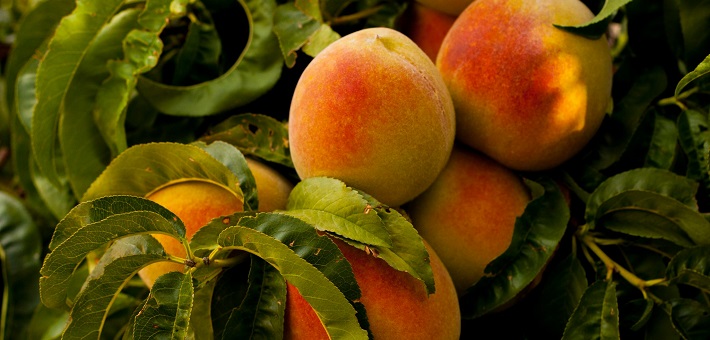Commentary on John 15:1-8
The next two Sundays of Easter take us into the middle of the Farewell Discourse in John’s Gospel. Chapter 13 narrates the “sign” that sets in motion the hour and Jesus’ farewell. The Farewell Discourse begins at 14:1, interpreting both the foot washing and the events to come, for Jesus and for his disciples.
The fifth through seventh Sundays of Easter in the Revised Common Lectionary are always from these chapters in John, with the seventh Sunday dedicated to the High Priestly Prayer (John 17). For our purposes here, the fifth and sixth Sundays in Year B are devoted to the first 17 verses of chapter 15, the extended metaphor of the vine and the branches, so it is incumbent upon the preacher to look ahead and determine on what to focus for each Sunday.
It is a unique homiletical challenge that in the Easter preaching season, we revert to the last night Jesus spent with his disciples before his arrest, trial, crucifixion, and resurrection. Yet, bringing Jesus’ last words forward into the Easter season is worth the homiletical effort. The resurrection appearances are all the more incredible when we realize that in Jesus’ resurrection, all of his promises of chapters 13–17 are fulfilled—and abundantly so.
The Farewell Discourse is Jesus at his pastoral best. Chapter 14 begins with the well-known assurance of Jesus preparing a place for the disciples (14:1–2) and the first mention and promise of the Paraclete (14:15–17). The metaphor of the vine and the branches introduces a new image through which the disciples might view their relationship with Jesus, especially anticipating his impending absence. “I am the vine” is the last “I AM” statement with a predicate nominative.
The “I AM” declarations are unique to John’s Gospel and occur in two forms: the “I AM” statements with a predicate nominative, and the absolute “I AM” statements by which Jesus reveals his true identity as God incarnated (4:26; 6:20; 8:24, 28, 58; 13:19; 18:5, 7). Given the location of this last predicate nominative “I AM” statement in the Farewell Discourse, all of the previous predicate nominative “I AM” statements stand behind “I AM the vine” (6:35, 51; 8:12; 9:5; 10:7, 9, 11, 14; 11:25–26; 14:6; 15:1, 5).
Jesus has loved his disciples to the end (13:1) with what he has provided for them throughout their time together. A preacher might rehearse the abundance of pledges from Jesus that reach their fullness in “I AM the vine.” Jesus is the bread of life, the light of the world, the living water, and so on. How do these predicate nominative “I AM” statements resonate here and now in Jesus’ parting statements?
Jesus first establishes the metaphor as that which encapsulates the relationship between him and the Father, before turning to the implications for the disciples. Critical for interpreting all of the images/metaphors in the Gospel of John is to recognize that they are fundamentally revelations of Jesus’ identity and the abundant life he both offers and provides (10:10).
The metaphor communicates mutual dependence, provision, union, and sustenance and recalls the relationship between Jesus and the Father established in the prologue to the Gospel (1:18). One of the primary claims of the Fourth Gospel is to assure believers that in their believing, they share in the relationship between Jesus and the Father now and always.
This is made clear when Jesus says to the disciples, “You are the branches.” This is the only predicate nominative “I AM” with a “YOU ARE.” After hearing Jesus’ distressing words just prior to this—“Do not let your hearts be troubled, and do not let them be afraid” (14:27); “I am going to the Father” (14:28); “I will no longer talk much with you” (14:30)—the disciples need to hear reassuring words. Jesus’ statement is not “You have been” or “You will be,” but “You are the branches,” and this present-tense promise is the peace needed for troubled hearts.
Jesus confirms the identity of the disciples when discipleship itself, because of the betrayal of Judas (13:30) and the foretelling of Peter’s denial (13:36–38), is uncertain. “I AM the vine, you are the branches” is both promise and possibility. In the midst of sorrow and loss, it is often hard to look ahead much farther than the next minute, but “You are the branches” sets in motion the disciples’ purpose.
While the branches cannot live without the vine, the vine doesn’t have much to give without the branches. This mutual need between Jesus and his disciples is an often-overlooked component of discipleship in the Gospel of John. Yet, without the disciples, the fulfillment of John 3:16 cannot come to bear and Jesus’ commission to the disciples, “As the Father has sent me so I send you” (20:21), is a vacuous directive. How can God love the world without them? Without us?
We see reciprocal need first in the relationship between Jesus and the Samaritan woman at the well. Yes, she needs him, the living water, but he needs her, first for a drink in the middle of a warm spring day, but then to be the testifier to her village people.
Locating “I AM the vine” in the Farewell Discourse prevents homiletical musings that might take a preacher down horticultural rabbit holes. Any explanation of vines and branches needs to ask the question, “What difference does this image make as the last ‘I AM’ revelation from Jesus?” Considering how the disciples would experience Jesus’ words here affords our interpretations the pastoral heart intended.



April 28, 2024